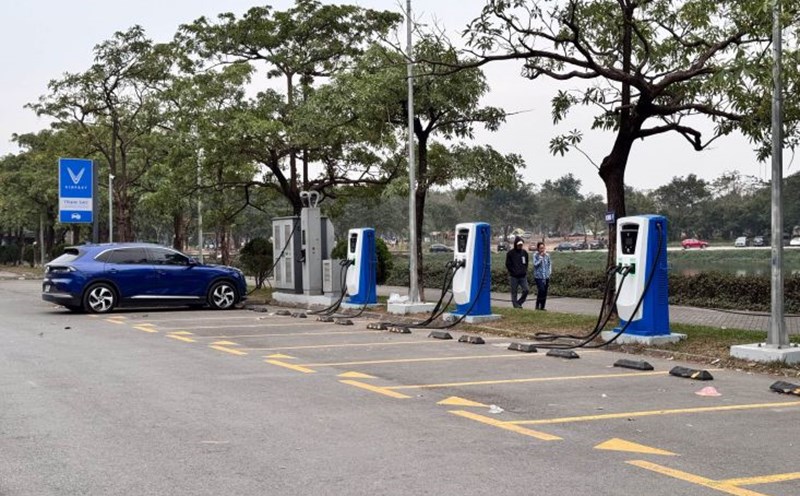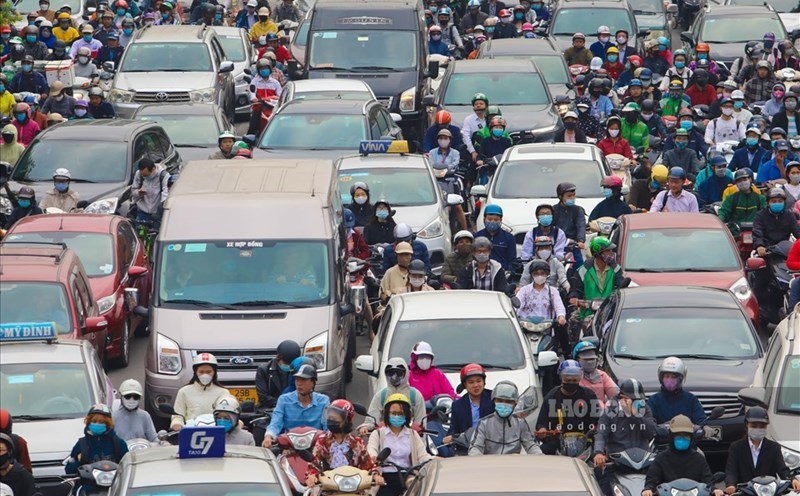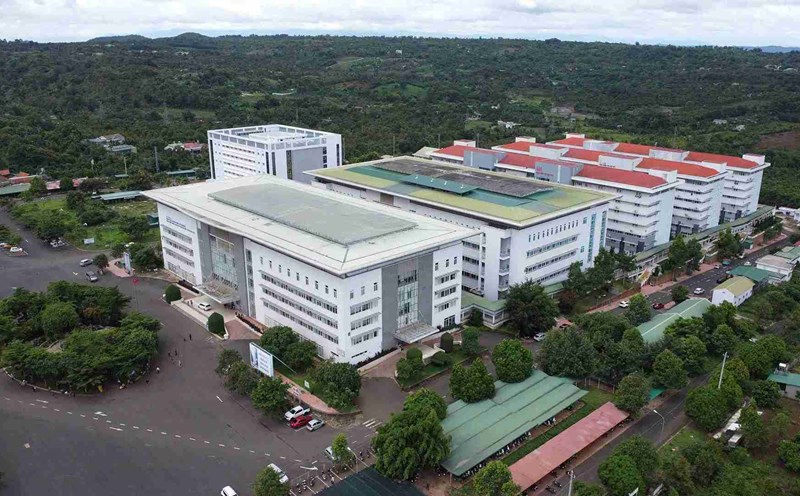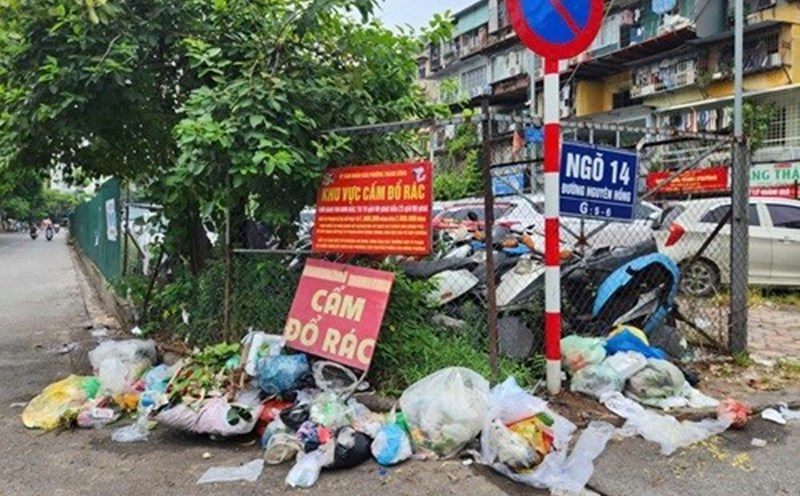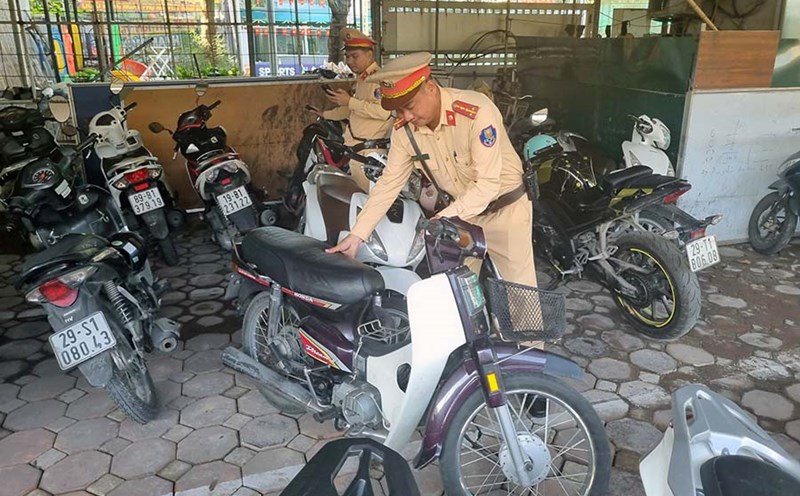Need to understand the proposal correctly
The Ministry of Construction announced the draft National Standard on fuel consumption limits and methods for motorbikes, mopeds and cars for public consultation. This is considered one of the strategic solutions to reduce CO2 emissions, supporting the goal of "net zero emissions" by 2050 committed by the Prime Minister at COP26.
According to the draft, from 2030, the average fuel consumption (CAFC) of all newly manufactured, assembled and imported cars in Vietnam must reach 4.83 liters/100km.
Regarding this proposal, one unit said that this is too strict a number, which could cause a big change to the domestic automobile industry. According to this unit, with 4.83 liters/100km, 96% of traditional gasoline vehicles will not meet the standards.
Associate Professor, Dr. Nguyen Dinh Tho - Deputy Director of the Institute of Strategy and Policy on Agriculture and Environment, Ministry of Agriculture and Environment - said that currently, many people do not understand correctly the proposal for national standards on fuel consumption limits and methods for motorbikes, mopeds and cars, including the regulation of consumption of 4.83 liters/100km.
CAFC is a method of calculating the average fuel consumption of the entire range of products sold. According to the CAFC method, with a speed of 4.83 liters/100km, the company can sell vehicles with lower fuel consumption, equal to or higher, provided the overall consumption of the vehicle lines reaches 4.83 or lower. The way we calculate the figure of 4.83 liters/100km includes the fact that businesses can buy credits from electric vehicles to reduce emissions. For example, our vehicle is being produced at 6.3 liters/100km, we can buy carbon credits from electric vehicles to calculate the rate at 4.83 liters/100km. This is a common policy orientation that many countries such as China, Europe... are using to encourage the conversion of vehicles using fossil fuels to using clean energy.
Associate Professor, Dr. Nguyen Dinh Tho commented that the current pollution situation in Vietnam is very serious, including the cause from traffic. According to the World Bank report (2022), air pollution causes about 7 million deaths worldwide each year. In Vietnam, there are at least 70,000 deaths each year due to air pollution, causing an average life expectancy of 1.4 years.
This situation is considered one of the biggest challenges to public health and sustainable development in Vietnam. PM2.5 fine dust concentration in Hanoi exceeds threshold, nearly 5 times higher than the average annual standard of the World Health Organization (WHO). About 40% of Hanoi's population (equivalent to 3.5 million people) are exposed to PM2.5 dust levels that are 5 times higher than the WHO standard (based on 2015 data).
Pollution in Hanoi comes from both domestic and foreign sources. About 1/3 of the PM2.5 fine dust in Hanoi comes from sources in the city, the remaining 2/3 comes from neighboring provinces in the Red River Delta and cross-border sources.
According to the World Bank report (2022), greenhouse gas emissions from transportation will increase by 6-7% per year by 2030, reaching nearly 90 million tons of CO2e. The emission proportion of public transport is still low. People mainly use motorbikes and the rate of car use is increasing. The transportation industry will still depend on imported fuel, with a three-fold increase compared to 2014, reaching 11.7 million tons of gasoline and 14.8 million tons of diesel by 2030. Traffic congestion and air pollution will become more serious in most cities in Vietnam. Without strong management measures, it is estimated that by 2030, nearly 85% of the Northern population will have to live in an un qualified air environment.
Compared to other countries, Vietnam's proposed fuel limit is not high
Currently, some opinions say that the proposed 4.83 liters/100km for cars in Vietnam in 2030 is too high compared to the world and impossible. However, with this calculation method, Vietnam's proposed level is not high.
In the US, the government manages it according to the Corporate Average Fuel Economy ( CAFE). The country aims to achieve the CAFE 49mpg (4.8 liters/100km) for new cars and light trucks sold from 2026. By 2031, the target is 50.4mpg (4.66 liters/100km).
The European Union (EU) controls cars according to CO2 emissions. From 2025, all new cars sold in the EU must achieve an average emissions of 93.6g CO2/km (equivalent to about 4.03 liters/100km). From 2030, the figure will decrease to 49.5g CO2/km (2.13 liters/100km), meaning consumption is only about half of the standard that Vietnam is aiming for. By 2035, the emission level will be zero, meaning the sale of gasoline and diesel vehicles will be banned.
In Japan, from 2020, new cars for sale need to achieve an average fuel consumption of 4.9 liters/100km. By 2030, the target will be increased to 3.9 liters/100km. In China, the CAFE for new passenger cars to be sold will reach about 4 liters/100km from 2025. By 2030, the figure will decrease to 3.2 liters/100km.
According to industry experts, compared to many countries in the world, Vietnam's proposal for an average fuel consumption of 4.83 liters/100km by 2030 is not strict. The important thing is that units and people must be truly determined in the conversion.

